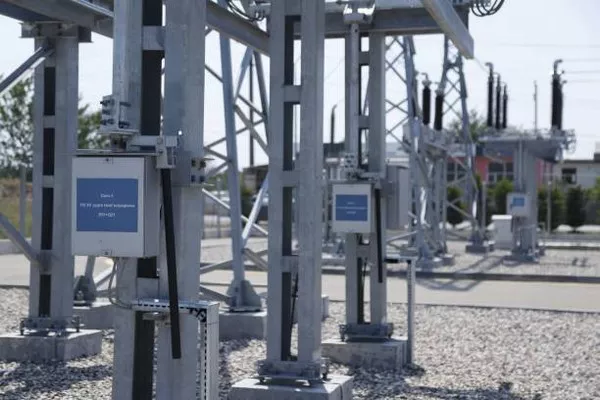Electric transformers play a pivotal role in the modern world by facilitating the efficient transmission of electrical energy over long distances. These devices are an integral part of our power distribution systems, ensuring that electricity can be generated at power plants and delivered to our homes, businesses, and industries. To appreciate their significance, it is crucial to understand the fundamental working principles of electric transformers.
The Birth of Transformers
The concept of transformers dates back to the early 19th century when scientific pioneers such as Michael Faraday and Joseph Henry were making groundbreaking discoveries in the field of electromagnetism. Faraday’s experiments with electromagnetic induction laid the foundation for the development of transformers, and Henry’s work further advanced the understanding of magnetic fields. However, it was not until the late 19th century that practical transformers were developed for use in electrical systems.
Basic Structure of an Electric Transformer
An electric transformer is a static electrical device that consists of two coils of wire known as the primary and secondary winding, usually wound around a common core made of ferromagnetic material such as iron or steel. The primary winding is connected to the source of electrical energy, while the secondary winding is connected to the load that receives the transformed electrical energy. The core serves as a magnetic circuit that allows for the transfer of energy between the two windings.
Working Principle of Electric Transformers
The working principle of an electric transformer is based on the phenomenon of electromagnetic induction, which was first described by Faraday. This principle states that when the magnetic flux linked to a closed circuit changes, an electromotive force (EMF) or voltage is induced in the circuit. In a transformer, the changing magnetic field produced by the primary winding induces an EMF in the secondary winding, resulting in the transformation of voltage and current.
Step-by-Step Operation
AC Power Supply: Transformers are primarily designed to work with alternating current (AC) power sources. When AC voltage is applied to the primary winding, it creates an alternating magnetic field within the core.
Magnetic Field Induction: The alternating current in the primary winding generates a magnetic field in the core. As the direction of the AC voltage changes, so does the direction of the magnetic field.
Induction in Secondary Winding: The changing magnetic field induces an electromotive force (EMF) in the secondary winding through electromagnetic induction. The EMF causes an alternating current to flow in the secondary winding.
Voltage Transformation: The turns ratio of the primary and secondary windings determines the voltage transformation ratio. If the secondary winding has more turns than the primary, it will step up the voltage, while fewer turns will step down the voltage. This is a crucial aspect of a transformer’s operation and enables the adjustment of voltage levels as required for various applications.
Power Transfer: The transformed voltage and current in the secondary winding can now be supplied to the load, which can be a residential home, an industrial facility, or any other electrical device.
Efficiency and Losses
While transformers are highly efficient devices, they are not without their losses. These losses can be categorized into two main types:
Core Losses (Iron Losses): Core losses occur due to the magnetic properties of the core material and are primarily of two types: hysteresis loss and eddy current loss. Hysteresis loss is the energy lost in the process of magnetizing and demagnetizing the core material during each AC cycle. Eddy current loss results from circulating currents induced in the core by the changing magnetic field. To reduce these losses, transformer cores are made of laminated sheets to minimize eddy current flow, and materials with low hysteresis properties are used.
Copper Losses: Copper losses occur in the windings of the transformer and are primarily resistive losses. These losses are proportional to the square of the current flowing through the windings and can be reduced by using thicker wire or materials with lower electrical resistance.
Efficiency in transformers is defined as the ratio of output power (power delivered to the load) to input power (power supplied to the primary winding). Higher efficiency transformers are designed to minimize core and copper losses, making them more economical and environmentally friendly.
Applications of Electric Transformers
Electric transformers find applications across various industries and sectors, including:
Power Transmission and Distribution: Transformers are essential for stepping up the voltage at power generation stations to transmit electricity over long distances with minimal losses. They are also used to step down the voltage for distribution to homes and businesses.
Industrial Applications: Transformers are employed in various industrial processes, such as steel manufacturing, chemical production, and mining, to supply power at appropriate voltage levels to machinery and equipment.
Commercial and Residential Use: Transformers are commonly used in households and commercial buildings to step down high-voltage electricity from utility lines to safe levels for lighting, appliances, and other electrical devices.
Renewable Energy: Transformers play a vital role in renewable energy systems, such as wind turbines and solar power installations, by converting the generated electricity to a suitable voltage for grid integration.
Conclusion
Electric transformers are indispensable components of our modern electrical infrastructure, enabling the efficient transmission and distribution of electrical energy. Their working principle, based on electromagnetic induction, has allowed us to harness electricity from power generation sources and deliver it to where it is needed. Understanding how transformers operate is crucial for maintaining a reliable and stable electrical grid while minimizing energy losses. As technology continues to advance, transformers will likely play an increasingly important role in facilitating the transition to cleaner and more sustainable energy sources.


